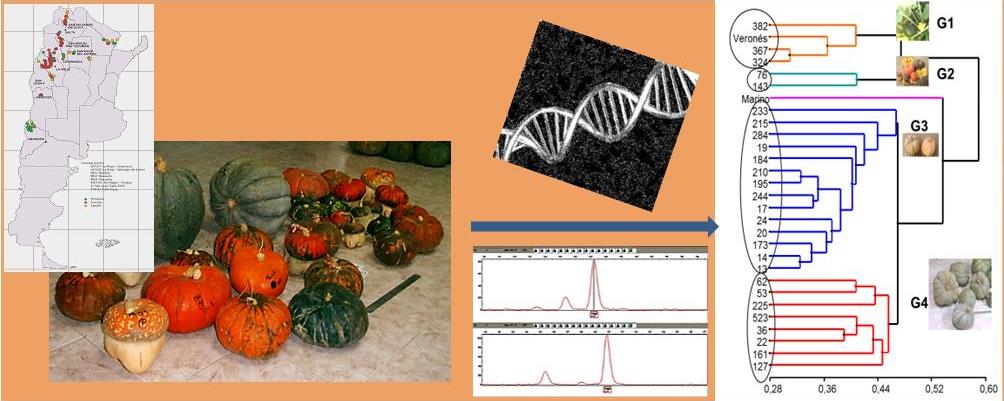Genetic diversity of squash landraces (Cucurbita maxima) collected in Andean Valleys of Argentina
Palabras clave:
Marcadores microsatélites, diversidad genética, bancos de germoplasma, recursos genéticos, zapallo, Cucurbita maximaResumen

Squash landraces (Cucurbita maxima) are maintained by small farmers as a major nutritional food. Twenty seven of these landraces were collected in Argentinian Andean Valleys and morphologically characterized. Genetic diversity was evaluated with microsatellite markers designed for Cucurbita pepo and Cucumis melo and evaluated for the first time in C. maxima. Seven microsatellite primers detected 26 alleles with 3.10 average alleles per locus. The Genetic Diversity reached an average of 0.26; a Polymorphic Information Content (PIC) of 0.20 and 45.5% of polymorphic loci. Higher diversity was found at intra population level. No evidence of lineal correlation between the observed diversity and the geographical distribution of squash landraces was found. Results demonstrate a moderate genetic diversity for all populations, with a wide range of variation in different groups. A subgroup of 10 populations with the highest levels of genetic diversity was considered for maintenance within core collections in the Vegetable Crop Germplasm Bank of Agricultural Research Station (EEA) La Consulta, Mendoza, National Institute of Agricultural Technology (INTA). Anthropogenic and environmental processes, mainly abandonment of cultivated areas and frequent droughts could erode squash landraces diversity. Conservational strategies and new collecting expeditions can be decided based on the genetic diversity found.
Highlights
- Argentinean squashe's landraces from different Andean environments were characterized for the first time by molecular markers.
- A technique was developed to generate the amplification products, and to detect useful markers for the conservation of C. maxima genetic resources in germplasm banks.
- Diversification strategies of food production and seed exchange are deeply rooted in Andean culture, which contributes to the intrapopulation diversity observed.
- Catamarca and Jujuy were the Provinces with the greatest genetic diversity for cultivated squashes.
- The great morphological diversity observed would be the result of species adaptation to Andean heterogeneous ecological environments, and anthropic selection.
Descargas

Descargas
Publicado
Cómo citar
Número
Sección
Licencia
Aquellos autores/as que tengan publicaciones con esta revista, aceptan las Políticas Editoriales.










.jpg)




